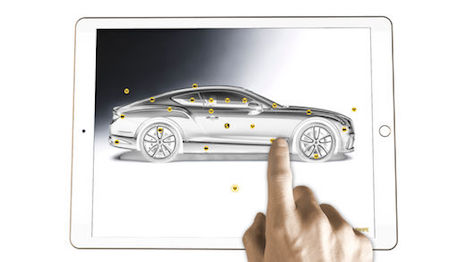- About
- Subscribe Now
- New York,
October 19, 2017

 Luxury consumers live an integrated online and offline life. Image credit: Bentley
Luxury consumers live an integrated online and offline life. Image credit: Bentley
NEW YORK – Luxury brands were once the arbiters of what was considered luxury, but now consumers dictate what is categorized as luxury and it is now the brand's job to follow consumer desire.
Speaking at Luxury Interactive 2017 on Oct. 17, an executive from Facebook and Instagram explained how rapidly the world of luxury marketing has changed over the past three years along with a roadmap for dealing with the next three years of development. The key is that brands need to create bespoke experiences for their consumers that treat them as individuals with an integrated online and offline life.
"It used to be much simpler back in the day," said Bora Park Chow, luxury partnerships lead at Instagram and Facebook. "As luxury brands, we defined what was luxury and consumers wanted to mirror those values.
"But today, to be exclusive is to be inclusive. Because consumers have so many more choices, they get to choose which brands fit into their values, which brands are creating bespoke experiences that meet their needs."
Online and offline
The year 2020 may seem like a long way away, but Ms. Chow reminded the audience at Luxury Interactive 2017 that that was only 26 months away.
For comparison’s sake, 26 months ago mattress startup Casper had just been founded, Saks had just acquired Gilt, Amazon became the second-largest apparel retailer in the world and the Apple Watch had just been released.
Clearly, a lot can change in just a few years. That is why it is more important than ever for brands to look ahead to try and predict what will change in the next three years.
One of the biggest changes that has happened is the blurring of the line between offline and online.
"Not too long ago, we divided everything in our world into our online world and offline world," Ms. Chow said. "That’s because we spend so much time on our phones.
Sephora is one brand that has embraced online to offline marketing. Image credit: Sephora
"But that’s not how people think anymore. Because of mobile, the two worlds have become one."
Facebook and Instagram have seen massive success from bridging these two worlds. By helping companies track customers across online and offline, Facebook has helped brands mirror the way customers actually live their lives today.
One of the best ways to track customers between those two worlds is through the use of CRM. Facebook has prided itself on its ability to match online sales to offline traffic.
"You upload your CRM to us and we match it to people who were exposed to your ads on Facebook," Ms. Chow said. "Now, you can optimize for a new signal and serve relevant messaging based on how and where your customer wants to shop.
"Michael Kors was one of our first partners," she said. "When they uploaded their data they saw 33 percent increase in attributed ad spend and 25 percent increase in attributed revenue."
Follow the leader
A variety of retailers have begun integrating omnichannel efforts directly into their physical stores as a means of encouraging customers to interact with the retailer on both an online and offline level.
LVMH-owned beauty retailer Sephora is highlighting some of its advanced retail innovations on a small scale with the opening of its smallest, but most feature-rich, storefront.
The Sephora Studio concept opened July 21 on Newbury Street in Boston, a high-end shopping district in the city. Sephora Studio features a small, intimate setting, but with a major focus on providing above-average consumer tools to find the products cosmetic lovers want (see story).
In the auto world, British automaker Bentley Motors is bringing its celebrations for the new Continental GT model to the small screen through a new mobile application.
Bentley released a mobile app to aid in purchasing. Image credit: Bentley
Bentley has collaborated with award-winning lifestyle app Boyd to create an interactive experience surrounding its Continental GT’s launch. Boyd’s app platform allows for immersive discovery on a mobile device’s screen, recreating the in-person dealership experience (see story).
Unsurprisingly, mobile has been one of the main drivers of blurring the online and offline worlds. Without it, brands will not have a reliable way to reach consumers on all levels.
Ms. Chow emphasizes that mobile is such an integral part of the modern luxury world, that it is impractical not to fully devote marketing resources to engaging with customers through mobile today.
"Your consumer is always on mobile," Ms. Chow said. "The phone is the first thing consumers see when they wake up and the last thing they see before bed.
"Sixty-five percent of people access mobile while shopping and 50 percent are multiscreen, TV and phone."
Share your thoughts. Click here